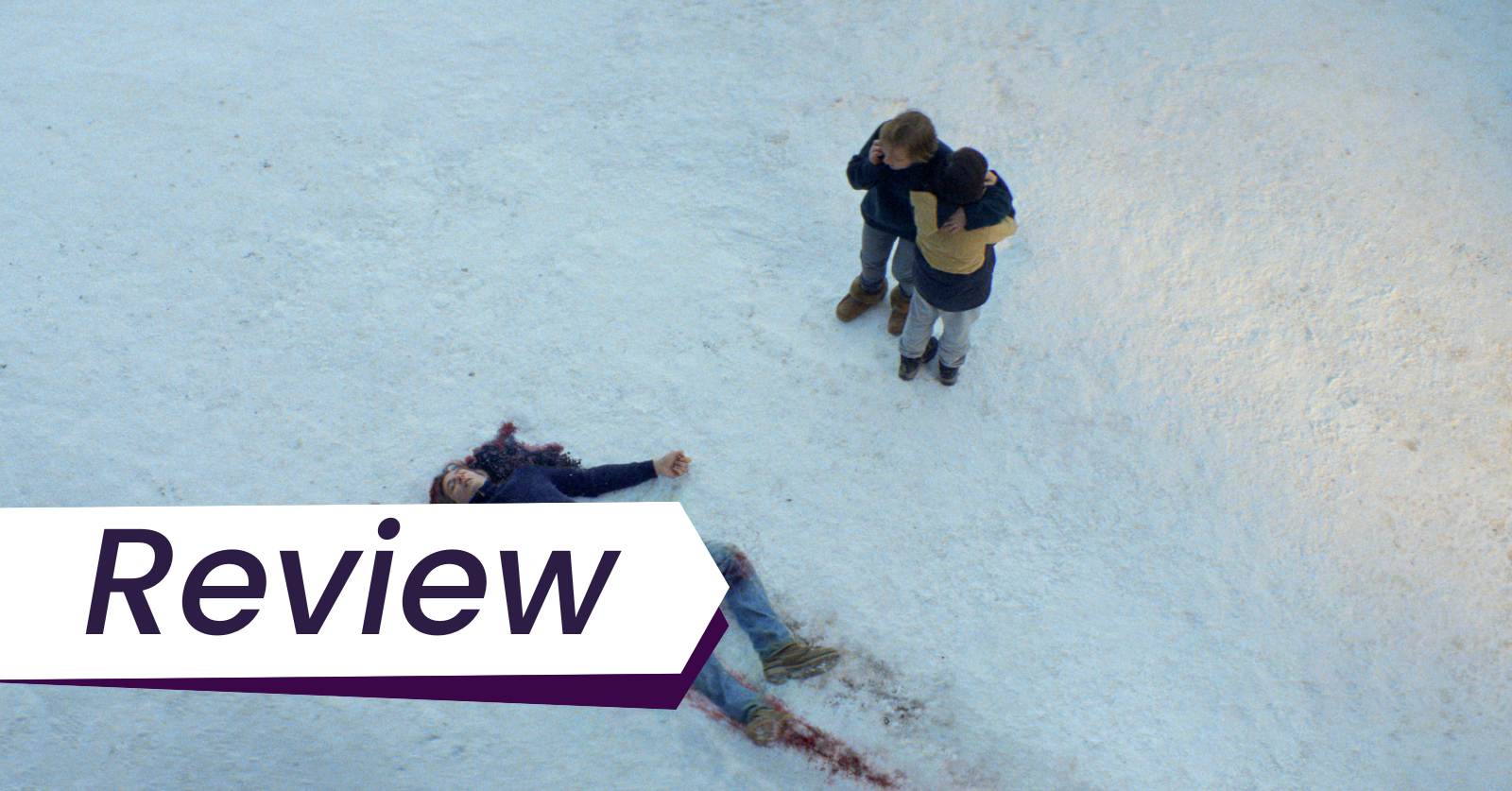Justine Triet’s Anatomy of a Fall is a courtroom drama and characters tudy about how we can never fully understand people’s private lives.
Listen to our podcast on Justine Triet’s In Bed with Victoria and Sibyl
Sign up for email updates about TIFF 2023.

Discover one film you didn’t know you needed:
Not in the zeitgeist. Not pushed by streamers.
But still easy to find — and worth sitting with.
And a guide to help you do just that.

Listen to the podcast season on Women at Cannes
Over the course of five episodes, we celebrate achievements of women directors at the Cannes Film Festival in Competition and beyond, both in 2022 and in the past — and take the festival to task for its history of sexist programming.
The opening shot of Justine Triet’s Palme d’Or winning Anatomy of a Fall is of a wooden staircase, shot from below, leading to some unknown place. Soon, we realize the staircase leads from the ground of novelist Sandra’s (Sandra Hüller) house to the upstairs private part. A ball bounces down the stairs, suggesting unseen life happening upstairs: a dog comes down to fetch it, but someone must have thrown it. Sandra is giving an interview about her work to a graduate student. They are rudely interrupted by overwhelmingly loud music upstairs, played by her husband, Samuel (Samuel Theis): a steel pan cover of 50 Cent’s “P.I.M.P.” which will haunt the film. From the beginning, we’re highly aware that we’re not getting the full picture of events unfolding in this house.
It’s an ingenious opening for a film about how we can never fully understand people’s private lives because we only glimpse them in fragments through their public ones. When Samuel turns up dead from what appears to be a fall, our picture of the couple gets repeatedly challenged and reshaped. Determining whether the fall was deliberate or forced is the subject of the rest of the film. The film’s tagline could be the unheard lyrics of “P.I.M.P.”: “I don’t know what you heard about me.”
Anatomy of a Fall is a courtroom drama in the loosest sense
Though Anatomy of a Fall is technically a courtroom drama, that’s only in the loosest sense: dogs don’t testify as one did in Triet’s In Bed With Victoria, and the law never gets mentioned once. The prosecutor (an entertaining Antoine Reinartz of BPM fame) is more of a bully than a legal adversary. The trial is a dramatic device to ask the audience to deconstruct the details of Sandra’s (Sandra Hüller) life and marriage. That’s also why initially important concerns, like the German Sandra needing to speak French, a not-quite-fluent third language in court, get dropped as soon as they become inconvenient to the plot. Nevertheless, Anatomy of a Fall is a compulsively watchable film as a character drama that reveals itself through a mystery. It forces you to watch the performances closely, looking for signs that someone is untrustworthy or distorting the truth.
In the courtroom, we are reminded, almost ad nauseam, that there are many gaps in the facts, and we must interpret what happened around the edges. But even Sandra’s interview with the student that opens the film is regularly interrupted by cuts upstairs to her son, Daniel (Milo Machado Graner). We never even get the complete picture of this conversation. Triet and co-writer Arthur Harari throw every type of evidence at the wall — audio recordings, transcripts, testimonies from experts and sus psychiatrists, novels, translations — to contradict and complicate what we think we know about the pair as we reconcile competing narratives. The film’s pleasures are in watching the facts and the ambiguities around them unfold and reading Hüller’s many-layered performance for clues about who this woman is.
Justine Triet’s fragmentary mise-en-scène
Triet’s mise-en-scène is as fragmentary as the evidence in the court case. Inside Sandra’s home, we spend a lot of time on the first floor, the public floor. Triet’s shots here are wide enough to give a sense of its layout. We never understand how the private floors upstairs connect. We only ever glimpse the spaces in the blurry background of closeups. Scenes inside the courtroom, meanwhile, are deliberately disorienting. We rarely see characters in traditional shot-reverse shots. Instead, we watch the back-and-forth between characters whose spatial relationship to one another changes in each cut. That’s usually because a lawyer is pacing around the room. This shooting strategy highlights the subjectivity of each person in the court.
There’s a particularly excellent moment in court when the prosecutor attacks Sandra. The reverse shot of the defence places Sandra’s lawyer, Vincent (Swann Arlaud), seated one level below her, directly in the crossfire, as if he’s physically protecting her. By contrast, when the camera faces the prosecutor, we only see the very top of Vincent’s head at the bottom of the frame but see Sandra’s body. The prosecution doesn’t see him as a barrier, and Sandra is vulnerable.
Triet plays with subjectivity in framing in Anatomy of a Fall
Triet cleverly plays with subjectivity in her framing, deliberately leaving out details that could be important. But she shows us enough to know we have an incomplete picture. In one of the film’s best scenes, Sandra practices her testimony for an upcoming deposition in front of a camera. We first see a seated Sandra, framed from the knees up, and a video camera at the side of the frame, which records her, like a deposition.
Midway through Sandra’s monologue, Triet unexpectedly cuts to Vincent, quietly smoking at the window, revealing this is a dry run for the real thing. It’s also when we clock we’re in Sandra’s house. We’ve never been in this room, but the window looks the same as the one in the attic where Samuel fell to his death. When Vincent responds to something Sandra says and turns to look at Nour (Saadia Bentaïeb), her other lawyer, we discover a third party in the room, so she enters the frame.
Hüller plays this deposition rehearsal with a lot of hand acting. Sandra constantly fidgets and emphasizes a point with her hands. It contrasts with the directness and certainty of her words; she’s not as collected as she sounds. But her hands are outside the from-the-neck-up frame the video camera captures. Triet thus initially allows us to see what those watching the deposition wouldn’t. Slowly, Triet’s frame pushes in on Sandra to mirror that of the recording. Without seeing the rest of her body, we read Sandra differently.
One of the foremost filmmakers for portraying complex women
Since In Bed with Victoria, especially Sibyl, Triet has become one of the foremost filmmakers for portraying complex, smart, multi-layered, and perhaps messy women. She belongs to the same remarkable group as Mia Hansen-Løve, Rebecca Zlotowski, and Alice Winocour. Throughout her oeuvre, Triet has been interrogating conventional gender roles. Her professionally successful heroines are a bit of a hot mess and tend to leave their kids with men at home while they are busy living their lives.
Sandra in Anatomy of a Fall is more straightforward and is perhaps the only Triet heroine who doesn’t seem to be lying to herself or the architect of her problems. Her oversized clothing, combined with her pixie cut, codes her as masculine. The biggest contention in her marriage is whether she does her share of emotional and household labour.
After Hüller stole every scene in her supporting role in Sibyl, it’s a pleasure to watch her take centre stage in Anatomy of a Fall. It’s a film that relies heavily on Hüller’s ability to captivate in long, uncut takes. Hüller has long been one of the best actors working today. But in the last few years, she’s largely been relegated to supporting roles on screen. Anatomy of a Fall is her first showcase screen role since Maren Ade’s Toni Erdmann (2016). (She played Hamlet on stage during the pandemic in a production that excised Horatio.) As an actor who only improves every year, it’s not a big surprise that Hüller does some of her career-best work.
A frenzied energy
Triet’s previous films have a frenzied energy, fast-paced and full of cuts to capture her heroines’ busy and multi-faceted lives. In Anatomy of a Fall, the chaos is in the shifts in subjectivity. Yet even when we’re deep in one of Sandra’s memories, in one of the only times Samuel appears on screen, most of the scene plays out on Sandra, whether speaking or reacting, in uninterrupted takes. Sandra’s directness and insight make her initially suspect, especially as she’s a little manipulative. But she proves an increasingly reliable narrator. And Triet trusts in her performer to let her carry so much of the film.
Picking nits
There are nits I could pick, which didn’t bother me much on the first viewing but became more glaring with the second. The film teeters on the edge of falling into disability tropes as Daniel is visually impaired. His excessive importance to the case approaches turning him into a seer. It’s tempered, though, by the film’s generally sensitive treatment of Daniel’s disability, especially Sandra’s attitude, which doesn’t see him as lesser. The disability became a significant point of contention in Sandra’s marriage, but in a way that feels very realistic. Though the film is about subtlety, it tends to leave no stone unturned when delivering its themes. You can miss a hundred nuances in the film is doing and still get the point. But it does mean that the mise-en-scène and screenplay are impressively cohesive.
With Anatomy of a Fall, Triet has become the third woman director to win the Palme d’Or at Cannes and the second (after Julia Ducournau for Titane) not to have to share it with a man. Although we at Seventh Row have been singing Triet’s praises for years, she’s still a relative unknown on the world stage. The Palme d’Or tends to go to showy statements that scream at you, “I have been directed.” Triet’s two-location film is more of a character portrait than a look-at-me directorial statement, which makes it seem, initially, a surprising choice. Then again, the sheer number of ways Anatomy of a Fall reminds us that what we’re watching is subjective and fragmentary, including using different film stocks and many documents, approaches overkill.
Related reading/listening to Justine Triet’s Anatomy of a Fall
More Justine Triet: Listen to our podcast on Triet’s “women on the verge” in In Bed with Victoria and Sibyl. Read our analysis of Sandra Hüller’s supporting performance in Sibyl and Virginie Efira’s lead performance.
More about Women at Cannes: In our 2022 Women at Cannes podcast season, we contextualized Triet’s historic Palme d’Or win by discussing the festival’s history of programming (or failing to program) films directed by women. Find out more about the season here. Listen to Episode 1 where we give an overview of the history of women directors at Cannes since its inception.
More films like Anatomy of a Fall: Mia Hansen-Løve’s Bergman Island is also a clever deconstruction of a relationship, as told by a screenwriter writing the story of her life. Canadian filmmakers Sarah Polley’s Take This Waltz and Rebecca Addelman’s Paper Year both dissect a marriage through the lens of an unreliable narrator. Listen to our podcast on Take This Waltz and Paper Year.
More from TIFF 2023: Read all of our TIFF 2023 coverage. Solitude is one of the best acquisition titles at the festival.

